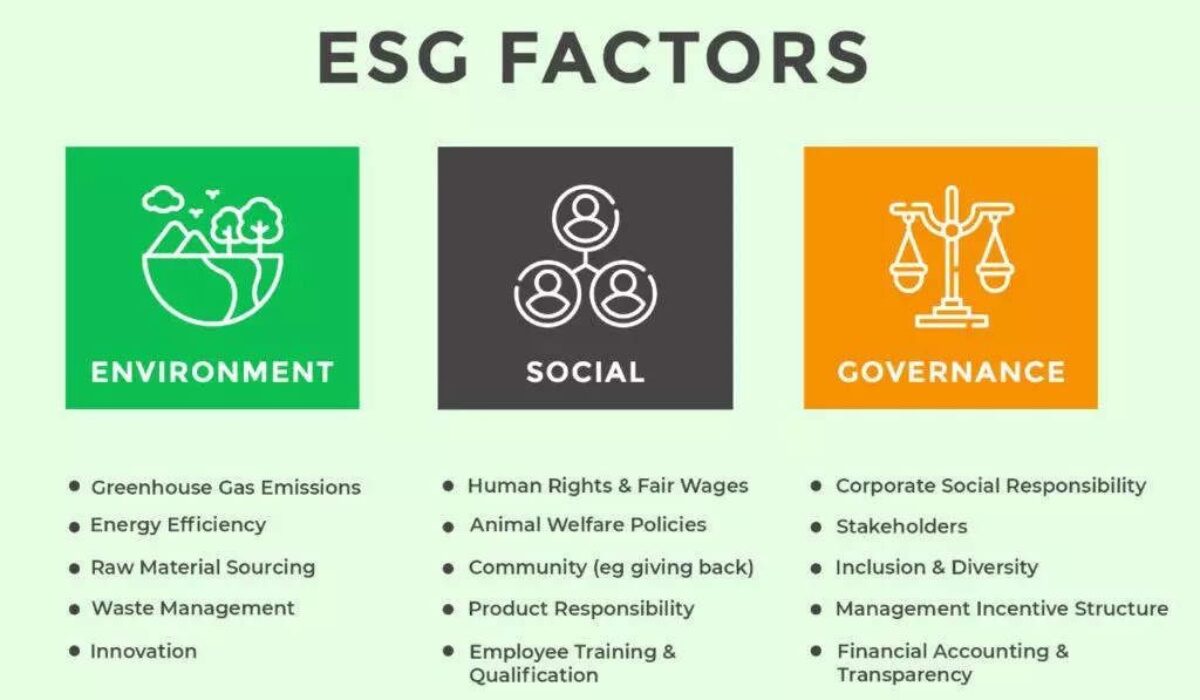Unveiling the Influence: Analyzing the Impact of ESG Factors on Stock Performance
In recent years, environmental, social, and governance (ESG) considerations have gained significant traction among investors seeking to align their portfolios with sustainability principles and responsible investing practices. ESG factors encompass a wide range of criteria that evaluate a company’s environmental impact, social responsibility, and corporate governance practices. In this blog post, we’ll delve into the growing importance of ESG factors in investment decision-making and analyze their impact on stock performance.
Understanding ESG Factors:
- Environmental (E): Environmental factors assess a company’s impact on the environment, including its carbon footprint, energy efficiency, resource management, and commitment to sustainability initiatives such as renewable energy adoption, waste reduction, and emissions reduction.
- Social (S): Social factors evaluate a company’s treatment of stakeholders, employees, customers, and communities. This includes factors such as labor practices, diversity and inclusion, employee relations, product safety, community engagement, and philanthropy.
- Governance (G): Governance factors focus on the quality and effectiveness of a company’s corporate governance practices, board structure, executive compensation, transparency, ethics, and risk management. Strong governance practices promote accountability, integrity, and shareholder value.
Impact of ESG Factors on Stock Performance:
- Financial Performance: Research suggests a positive correlation between strong ESG performance and financial performance over the long term. Companies with high ESG ratings tend to exhibit lower volatility, higher profitability, and better risk-adjusted returns compared to their peers.
- Risk Management: ESG factors can serve as indicators of risk management practices and potential risks that may impact a company’s financial performance. By addressing ESG risks such as environmental liabilities, regulatory compliance, labor disputes, and reputational risks, companies can mitigate operational and financial risks and enhance long-term resilience.
- Stakeholder Engagement: Companies that prioritize ESG considerations tend to have better relationships with stakeholders, including employees, customers, investors, and communities. Positive stakeholder engagement can lead to enhanced brand reputation, customer loyalty, employee retention, and investor confidence, ultimately driving long-term value creation and stock performance.
- Access to Capital: Investors are increasingly integrating ESG criteria into investment decisions, leading to a growing demand for ESG-compliant investments. Companies with strong ESG credentials may have better access to capital, lower financing costs, and increased investor interest, driving stock performance and shareholder value.
Considerations for Investors:
- Integration of ESG Factors: Consider integrating ESG factors into your investment analysis and decision-making process to identify companies with strong ESG performance and long-term growth potential.
- Data and Metrics: Use ESG data and metrics from reputable sources to assess companies’ ESG performance and compare them against industry peers and benchmarks. Look for transparency, consistency, and relevance in ESG reporting.
- Materiality and Relevance: Focus on ESG factors that are material and relevant to a company’s business model, industry, and risk profile. Prioritize ESG issues that have a significant impact on financial performance and value creation.
- Engagement and Advocacy: Engage with companies on ESG issues through shareholder advocacy, proxy voting, and dialogue with management to promote transparency, accountability, and continuous improvement in ESG practices.
Conclusion:
The integration of ESG factors into investment analysis and decision-making is reshaping the investment landscape, driving a shift towards sustainable and responsible investing practices. By analyzing the impact of ESG factors on stock performance, investors can identify companies that are well-positioned to navigate ESG risks, capitalize on ESG opportunities, and deliver long-term value for shareholders while advancing environmental, social, and governance objectives. As ESG considerations continue to gain prominence, investors can leverage the power of ESG analysis to align their portfolios with their values, mitigate risks, and pursue sustainable investment outcomes.



